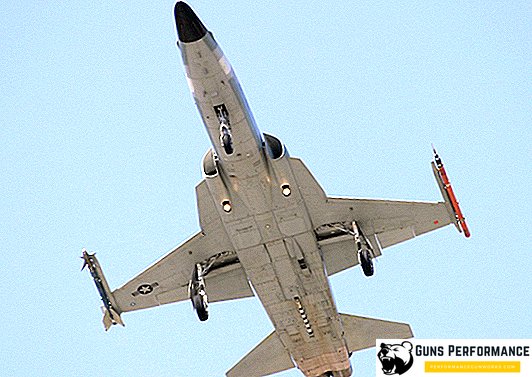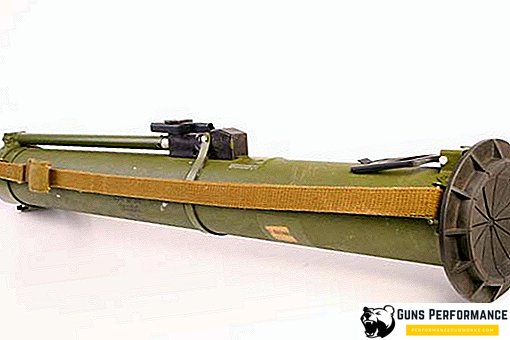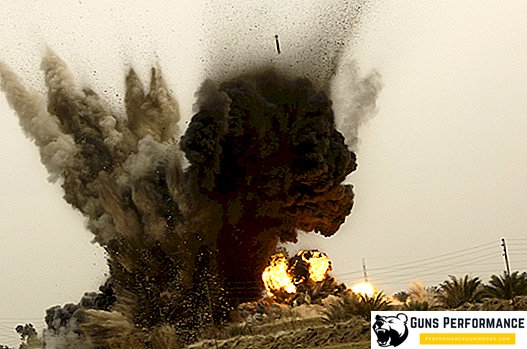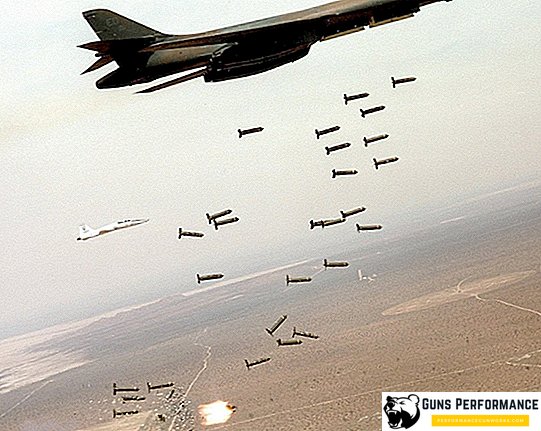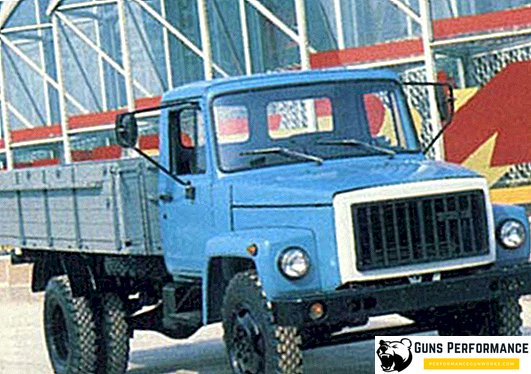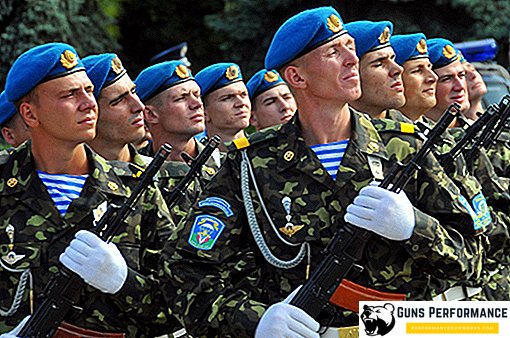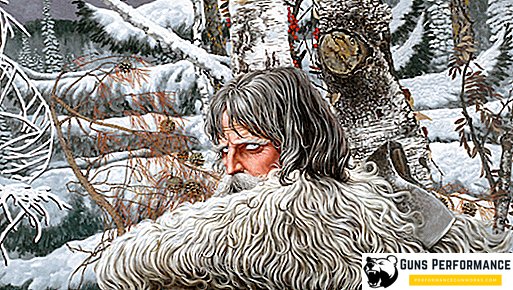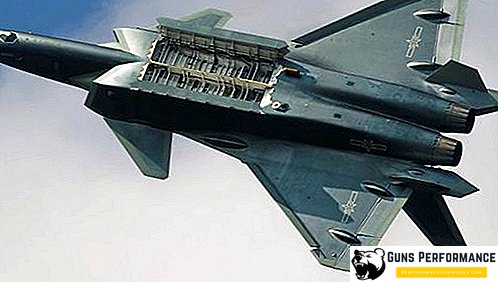None of the people who know will argue: the cleaning of weapons is a necessary thing. Regardless of whether we use it or it just stands in our closet, nevertheless the weapon tends to become contaminated over time. Especially, of course, it gets dirty in the process of operation: during firing, during a hunt, and if it is a military weapon, even during a battle.
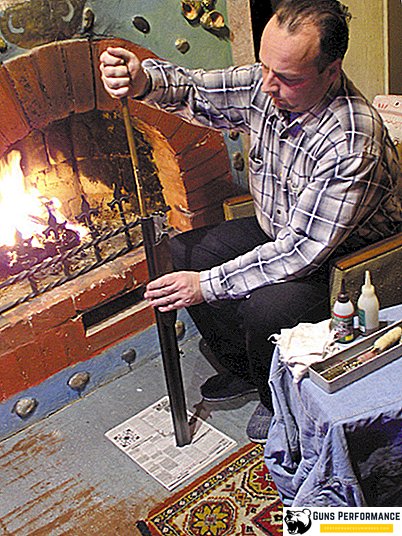
This raises a whole list of questions: how to clean the weapon correctly, which cleaning products are best for this, how often cleaning is necessary, with what devices, etc. If we know why cleaning is necessary and apply our knowledge in practice, our weapon will serve us long and reliably.
How the weapon gets polluted
Naturally, the most intensely polluted weapons as a result of shooting. It is also clear that the trunk is exposed to the greatest pollution. When fired inside the barrel, high pressure occurs. Residual products, which are formed during the combustion of gunpowder and as a result of ignition of the capsule, are deposited on the inner surface of the barrel. These products affect the metal, and hence the trunk in the most disastrous way. In addition, these sediments spoil the polishing of the trunk.
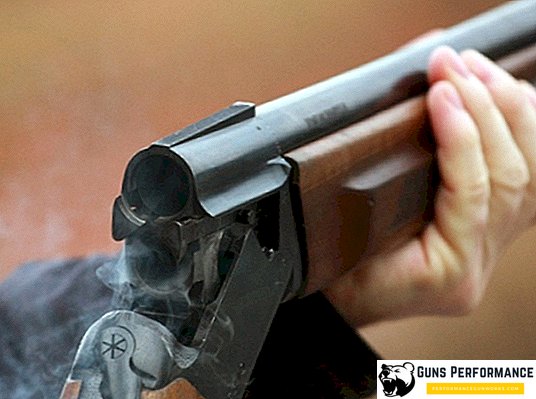
It should be remembered that potassium chloride, which is part of the primer, is much more harmful to weapons than residual powder products. When fired, its particles come into contact with the surface of the barrel, because of which, at the points of contact, the steel loses its original properties and becomes fusible. The powder gas formed during the shot melts the steel fragments and pushes them out. As a result, the inner surface of the trunk becomes rough, a rash and small shells form on it. Owners of weapons, this process is known as the "high of the barrel."
And this is not all the harmful effects of potassium chloride. It also has the property to draw in atmospheric moisture inside the barrel, due to which steel in the barrel bores and corrodes. In addition to potassium chloride, the capsule contains mercury, the remnants of which penetrate deep into the metal, as a result of which microcracks arise, contributing to the further height of the trunk.

Due to the warming up of the barrel during the shot and the cooling after it, the chemical reactions that contribute to the height of the barrel last from 3 to 5 days. If, at the same time, there is daily intensive shooting from a weapon, then the process is only intensified due to the friction of the bullet passing through the bore. And it will be aggravated until you clean the weapon.
There are three main stages of cleaning weapons:
- pour alkaline oil (solvent) on the inside of the weapon;
- clean the weapon;
- lubricate the weapon.
Of course, when cleaning weapons of various systems there are many features that must be considered.
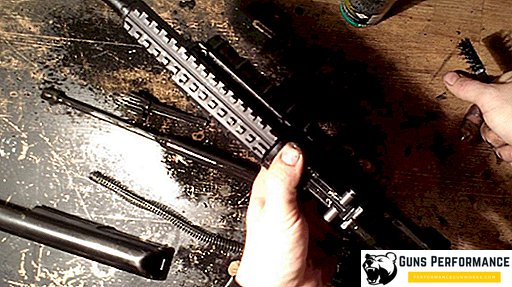
Shoe rifle
Basic rules for cleaning rifles:
- The rifle must be cleaned in the following order: first - the breech, then - the muzzle. That is, in accordance with the direction of flight of the bullet;
- In the same direction - from the breech to the muzzle - should move and ramrod. It is recommended to change the patch more often (a special napkin wound on a wipe called a cherfer). Patch - a disposable device, so it is not recommended to use it again;
- A ramrod for cleaning weapons to move in the "round-trip" is not recommended. Because of this, scratches can form inside the trunk. Moreover, the brush and the patch are easily clogged by particles deposited on the walls of the trunk;
- Brush for cleaning weapons you need to choose not soft, but hard. Soft bristles very quickly become clogged with hard soot deposited inside the trunk, and it is very difficult to remove it from the soft ruff. On the contrary, the ruff with a stiff brush in this sense is much more effective, as it more reliably cleans the inside of the trunk. At the same time, it is necessary to ensure that the brush remains dry (as well as the patch), otherwise, residual particles in the barrel bore will stick to them again;
- It is desirable to clean the weapon immediately after the shooting. It is not recommended to transfer the cleaning to the next day. The reasons for this requirement have been discussed above;
- Periodically, it is necessary to clean the weapon even if no shooting from it has been carried out. The lubricant used is not so intense;
- If a weapon was fired, then, as was said, it should be cleaned immediately after the shooting. After 2-3 days, the weapon must be cleaned again, and after another 2-3 days - for the third time. And only then the rifled weapon can be stored for a long time, however, it should be remembered that it should be periodically cleaned during long-term storage;
- The most thoroughly necessary is to clean the muzzle and the bullet inlet - as the most "easily visible" parts of the barrel;
- When the rifle is cleaned, it is very undesirable to use at the same time a variety of "do-it-yourself": homemade compounds, lubricants, not intended for gun cleaning. Do not use homemade alkaline compounds, it is also impossible to immerse the weapon or its individual parts in strongly alkaline solutions. Such an amateurish approach to the cleaning of weapons can simply kill these weapons;
- After cleaning the gun barrel, as well as all cleaned components and mechanisms must be lubricated with gun oil.
To clean weapons more efficiently, you can use a stand or machine for cleaning weapons. These are special devices on which the weapon is conveniently fixed. In addition, there are special niches on the machine and stand for putting there gun-oil and other means for cleaning and lubrication. The stand for cleaning the weapon is very compact, so if you want, you can take it with you at least for hunting, at least for sporting shooting competitions. It can be made with your own hands, and you can buy a brand.
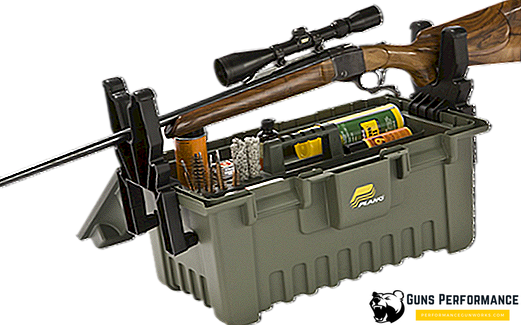
Shoe smoothbore weapons
Smooth-bore weapons, like all other types, need to be cleaned. Here it is important to know what the frequency of cleaning such weapons. On this account, there are many opinions, but most knowledgeable people argue that smooth-bore weapons must be cleaned at least monthly - even if they did not shoot and pull them out of the safe.
However, there are situations when the weapon must be cleaned more often:
- After buying a gun - especially new;
- After the gun was made shooting;
- After each day spent on the hunt;
- After the hunting season is over.
After purchase, the gun must be cleaned to remove the factory grease, and also to check how the weapon is assembled and whether there are any defects in it. In the process of zeroing the gun must be cleaned after every shot. This will help determine how accurate the gun is. With the cleaning of the gun during the hunt, everything is clear and without explanation: it is on the hunt that the gun is contaminated the most. Well, in the “dead season” the gun is cleaned for preventive purposes: moisture can accumulate in the weapon during storage in the closet.
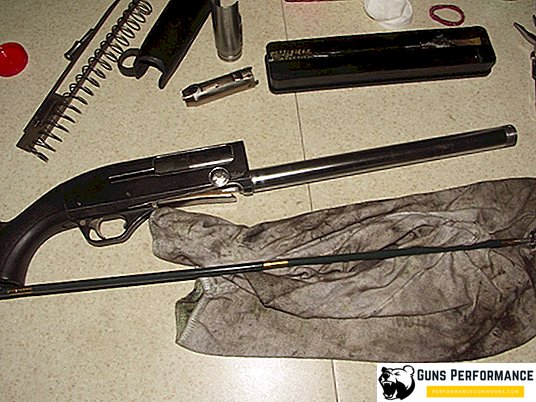
Smooth-bore weapons are cleaned in the following sequence:
- First, the barrel is broken or dismantled (depending on the weapon design);
- Screwed on a ramrod, a brush is passed along the inside of the table to remove substances that are harmful to the weapon from the barrel;
- It is necessary to change the brush on the ramrod for the cherries into which the patch is inserted, and with the help of such devices the barrel is cleaned until there are no signs of soot and soot in it. At the same time, the patch must be periodically changed;
- If several rags have already changed, and the traces of burning are still not completely removed, then in this case, the cloth should be moistened with turpentine or kerosene;
- After the dirt has been completely removed from the barrel, a brush with stiff bristles, which are coated with universal or neutral grease, is put on the ramrod, and the entire inside of the barrel is covered with this grease;
- Outside, dirt is removed from the entire body of the weapon, after which the body should be lubricated with a thin layer of lubricant;
- The wooden parts of the weapon are also cleaned of dirt and greased;
- After that, the gun must be collected and placed for storage in the safe.
When cleaning, care must be taken to prevent moisture from entering the barrel. If the weapon is cleaned in the winter, then in this case the gun is allowed to "sweat" by wrapping it in a warm cloth.
However, all this is good, if the weapon is not rusty, but if it has already begun to rust, then more radical means are needed. In this case, the barrel is cleaned with a metal brush and a hard brush. In this case, the brush and brush, as well as the stem for cleaning the barrel, are moistened with dehydrated kerosene. If there is a lot of rust and it is old, then kerosene should be poured into the barrel, the barrel itself should be plugged with a tight stopper, and left everything in this form for 24 hours. After that, the barrel must be cleaned with the help of the same brush and brush.
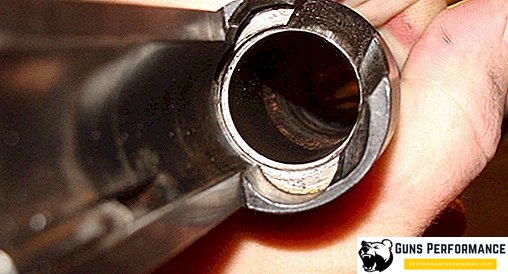
But if rust has formed on the arms outside, then waterproof glue may be useful. First, with the help of a hot soda solution, all the lubricant is washed off from the gun. Then the glue is diluted in hot water, and this substance is applied to the surface of the weapon - on the part of it where rust has appeared. The glue dries instantly, after which a universal lubricant is applied to the treated surface.
Even if such a tool with rust failed, then you can try to remove it by preparing for this solution:
- Ammonium sulphate - 28 g;
- Ammonium carbonate - 13 g;
- Ammonia water - 170 g;
- Distilled water - 100 g
The prepared solution should be poured into the barrel, plug the barrel on both sides with corks, hold the solution in the barrel for half an hour, then remove it, wipe the barrel dry and lubricate with alkaline oil.
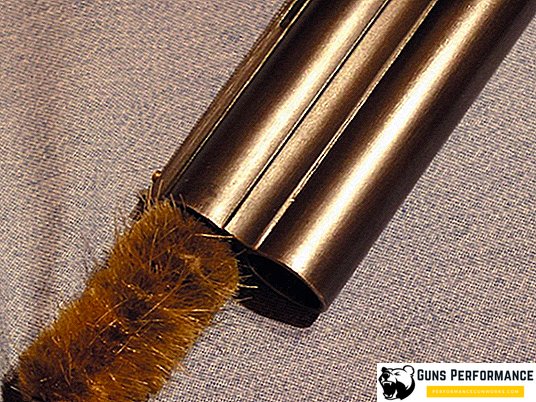
Airgun cleaning
Pneumatics also need to be cleaned. Not so, of course, often as a rifled or smooth-bore weapon - but still less. The air rifle is also clogged, and in addition, its charges also leave a mark inside the barrel. In addition, the barrels of pneumatics are not as high-quality as those of other weapons, the steel is relatively soft to make them, and for this reason such barrels rust more easily and faster than those of hunting rifles.
Air rifle cleaning is necessary in the following cases:
- In the range from 100 to 200 shots;
- When the rifle decreases accuracy (the rifle begins to "spit");
- When smoke and sparks are seen from the barrel when fired.
Pneumatic stem can begin to clean from either end. The process of cleaning the "air" consists of four main steps: removing lead plaque inside the barrel, degreasing the barrel, drying and lubricating. After that, the cleaned weapon must be lubricated. When lubricating the barrel pneumatics should take into account rather specific nuances.
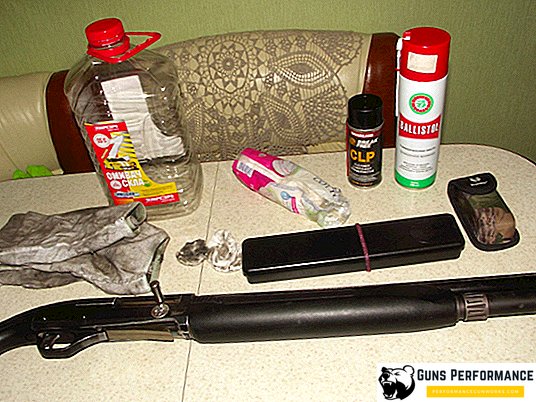
In principle, lubrication for an airgun is needed "insofar as," but still the charge is moving more easily on a lubricated barrel. However, if the barrel is smeared excessively, then the accuracy of the battle in this case will decrease (the rifle, again, will "spit" in different directions). It is best to lubricate the barrel with some neutral gun oil. And - extremely thin layer.
Cleaning weapons 12 (16, 20) caliber
In general, for cleaning weapons of 12, 16, and 20 caliber, you need the same set of tools and tools as described above. Yes, and the sequence of cleaning and lubrication of the barrel and the individual nodes - the same.
The only "know-how" here lies in the fact that many experts and practitioners advise you not to clean the barrel of a gun with a rag, but with a ball made of toilet paper. Such a ball is pushed into the trunk and pushed along the entire length of the trunk with the help of a ramrod with a ruff mounted on it. It is argued that toilet paper cleans the barrel much better than rags. For a perfectly positive result, it is recommended to clean it with several such balls.
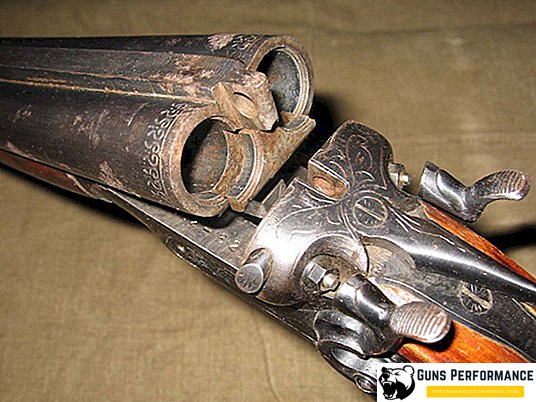
However, at the present time special devices for cleaning weapons of any caliber have appeared in gun shops.
Means for cleaning weapons
For all the time of existence of firearms for its cleaning, innumerable devices have been invented, ranging from the most primitive and primitive to the most modern, which can be found in the catalog. We will not speak here about the old methods like cleaning the barrel bore with crushed bricks. Let's talk about some of the most popular modern tools for these purposes:
- German-made Ballistol gun oil 50 ml (liquid);
- Gunex oil of the same production of Gunex 2000 200 ml in the form of a spray. Means for cleaning pollution inside the barrel Robla Solo MIL 100 ml in the form of a liquid. Made in Germany. All these three tools are included in the kit, with which you can clean and preserve weapons;
- For the same purpose, there is the American BIRCHWOOD-CASEY Value Pack;
- Foam for cleaning weapons. The global chemical industry has produced a lot of foam samples for this purpose. For example, Armatech 210 ml Russian production. Or - Schmeisser 200 ml of German production. And so on;
- Means for cleaning of the weapon from a soot and soot, and also for protection against corrosion of Ballistol Robla Solvent. The solvent is produced in the form of an aerosol, and perfectly cleans the barrel - especially when using charges with black powder. In addition, the solvent remarkably resists corrosion;
- The set for cleaning of the weapon is a special flexible snake, and the weapons are exclusively 12 caliber. Produced in the USA;
- Alkaline composition "Taiga" Russian production. It is remarkable that it can effectively clean any weapon - rifled, smooth-bore, pneumatic. At the same time its cost is very small.
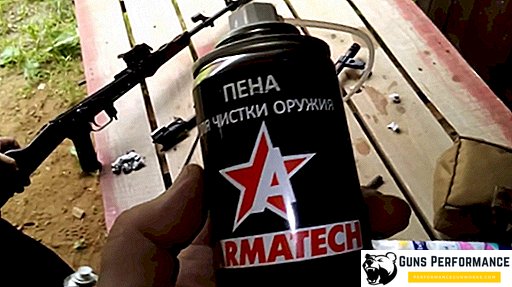
This list could be continued, but it is better to look in the catalog and choose a tool to your liking and afford it.
Summing up, we can say that the cleaning of weapons is the most important condition for them to serve for many years faithfully.


